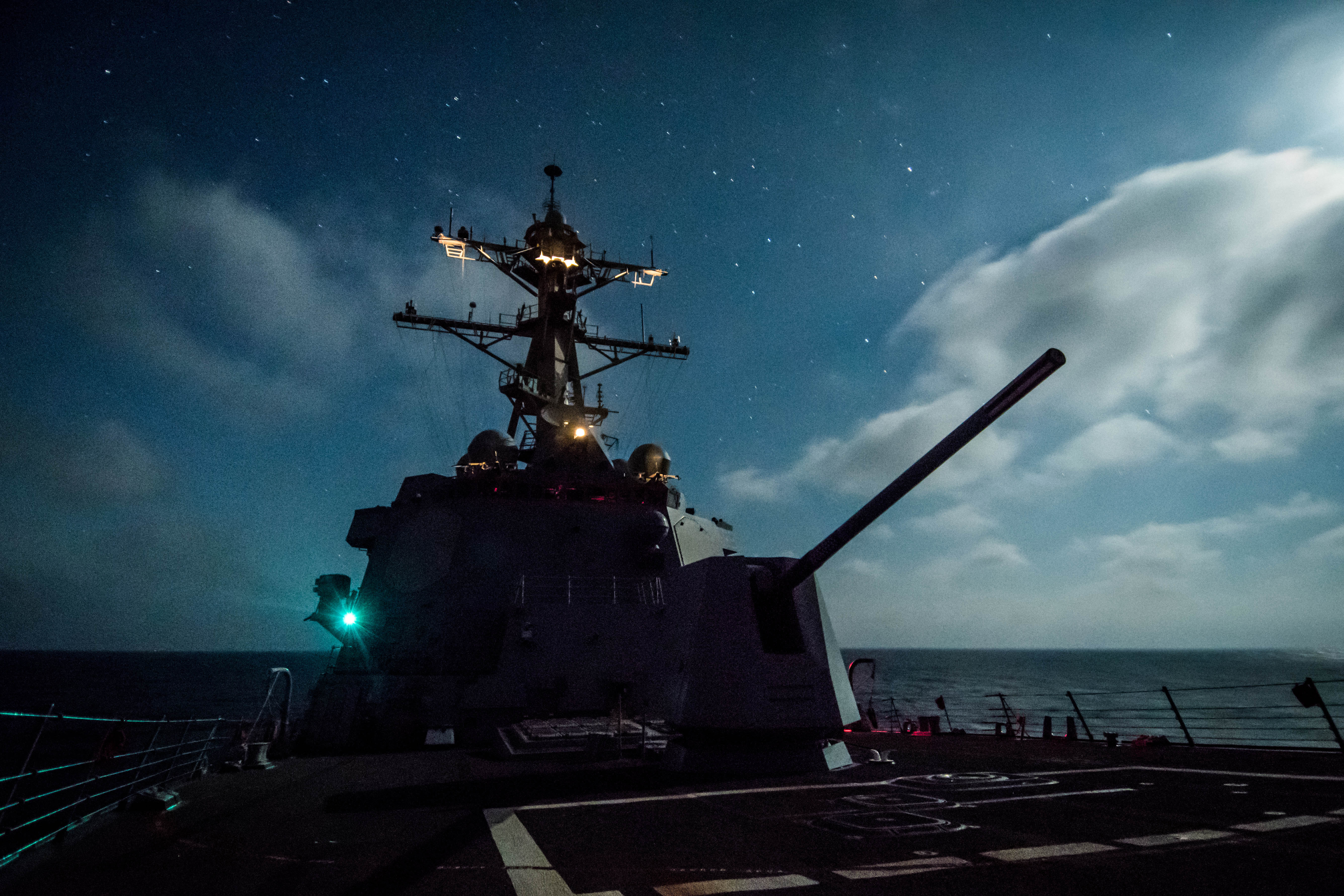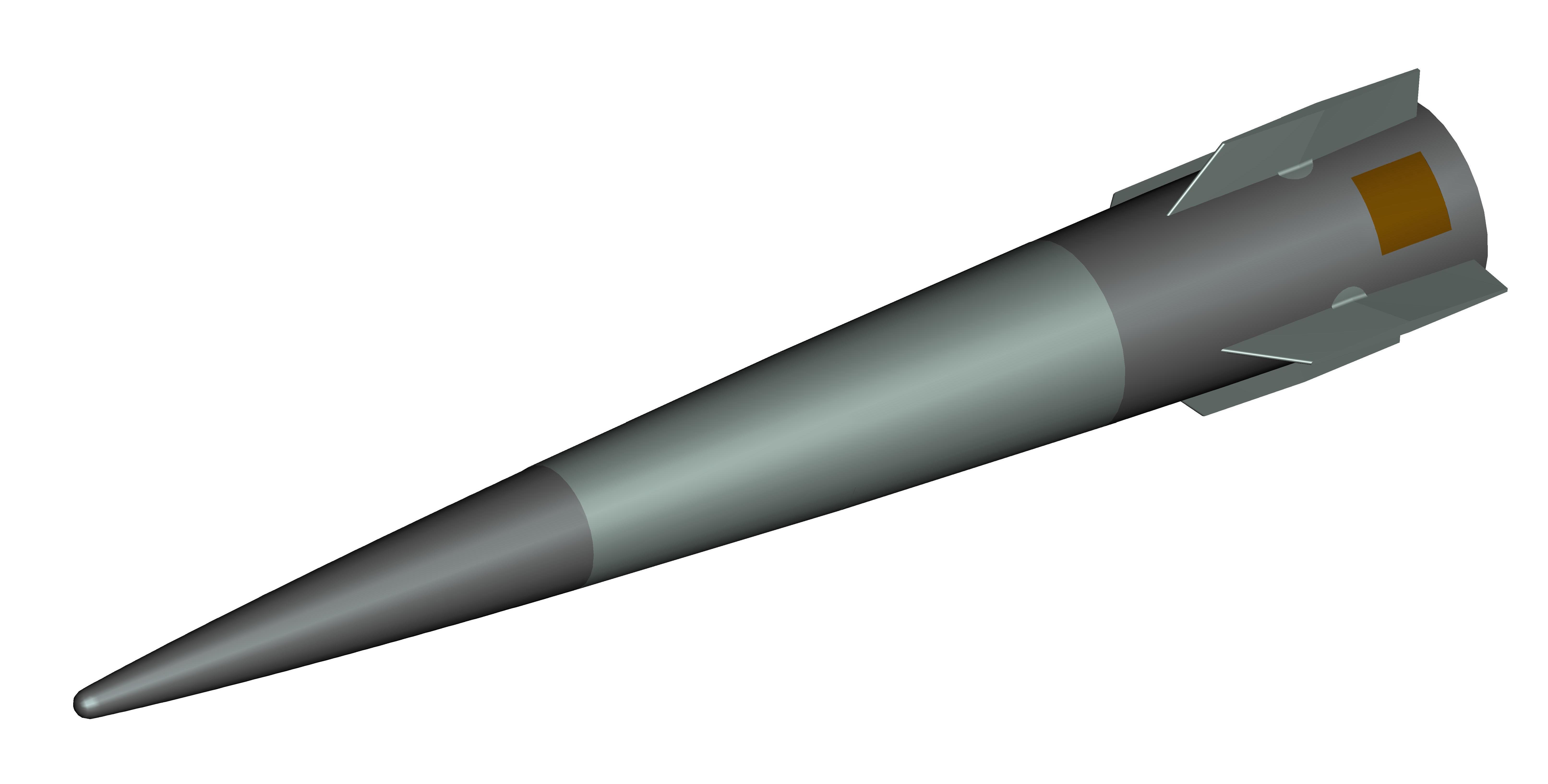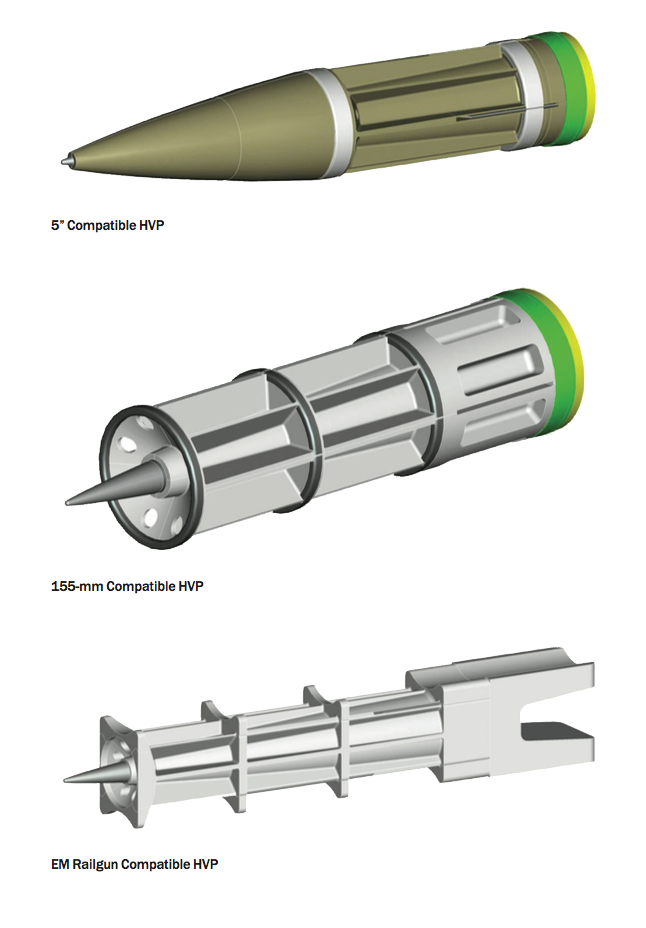KILL CHAIN MAKE IMPOSSIBLE TO TARGET USA AIRCRAFT CARRIER
https://www.forbes.com/sites/lorent...nt-target-u-s-aircraft-carriers/#550277af716a
Why China Can't Target U.S. Aircraft Carriers

Loren ThompsonSenior Contributor
Aerospace & Defense
I write about national security, especially its business dimensions.
Critics of U.S. aircraft carriers have been arguing for decades that the survival of the world’s biggest warships will increasingly be at risk in an era of long-range, precision-guided anti-ship missiles. In recent years, China has typically been identified as the military power most likely to drive U.S. carriers from the sea.
But the U.S. Navy seems much less worried about carrier attacks than observers who lack military credentials and clearances. In fact, the outgoing Chief of Naval Operations, Admiral John Richardson, told an audience earlier this year that “we’re less vulnerable now than we have been since and including World War II.”
One reason the Navy is not alarmed is that it has invested heavily in new technologies aimed at bolstering the defenses of carrier strike groups. It also has changed its tactics for operating near China. But the biggest reason for confidence about the future resides in the difficulties China would face in trying to find and track U.S. carriers.
Large-deck, nuclear-powered aircraft carriers of the type the U.S. Navy operates seem like they would be easy to target. They are over a thousand feet long, they are 25 decks high, and they are made of steel that reflects radar signals. They have distinctive optical, infrared and radio-frequency signatures.
Recommended For You
![Chinese attackers would face numerous challenges in trying to complete the complex kill chain... [+] associated with engaging a U.S. aircraft carrier. Chinese attackers would face numerous challenges in trying to complete the complex kill chain... [+] associated with engaging a U.S. aircraft carrier.](https://thumbor.forbes.com/thumbor/960x0/https%3A%2F%2Fblogs-images.forbes.com%2Florenthompson%2Ffiles%2F2019%2F08%2FUSS_Nimitz_in_Victoria_Canada_036-1200x795.jpg)
Chinese attackers would face numerous challenges in trying to complete the complex "kill chain"... [+]
WIKIPEDIA
So what can be so hard about targeting them, using the extensive arsenal of anti-ship missiles that China has accumulated? Well for starters, there are the huge distances within which carriers operating in the Western Pacific can hide. The South China Sea alone measures 1.4 million square miles, and is only one of four marginal seas from which carrier air wings could launch attacks against China.
PROMOTED
Teradata BV BRANDVOICE | Paid Program
Advanced Analytics And Integrated Data Management Are The Answer To FinCrime
UNICEF USA BRANDVOICE | Paid Program
UNICEF Is Getting Cash Directly To Yemeni Families Who Need It Most
Civic Nation BRANDVOICE | Paid Program
Connecting Music’s Future With Today’s Leaders
If a carrier is conducting sea control operations—keeping the sea lanes open to key allies such as Japan—it will likely be beyond the first island chain that parallels the Chinese coast, and thus able to hide in the vastness of the Western Pacific. It is hard to find anything in millions of square miles of open ocean, and in the case of U.S. carriers the target will be moving constantly.
Nuclear power makes that possible. U.S. carriers essentially have unlimited range. If China’s military actually sights a carrier, it will not be where it was seen by the time weapons arrive. At 35 miles per hour, the carriers can be anywhere in an area measuring over 700 square miles within 30 minutes. That area grows to over 6,000 square miles after 90 minutes, which is the more likely time elapsed between detecting a carrier and launching a missile from the Chinese mainland.
But let’s back up for a moment and consider the multiple hurdles that Chinese attackers would need to overcome to successfully target a carrier. First, they would have to find the carrier; then they would have to fix its location; then they would have to establish a continuous track of its movements; then they would have to actually target the carrier with specific weapons; then they would have to penetrate the carrier’s multi-layered defenses to reach the target; and finally they would need to assess whether the resulting damage was sufficient to disable the carrier.
The Navy refers to this process as a “kill chain,” and the metaphor is instructive. Because each step must be accomplished sequentially, if any “link” in the chain fails the whole process breaks down. The Navy and its partners in the joint force have plans for disrupting potential attackers at each step in the process.
Consider the initial steps of finding and fixing the carrier’s location. China has several options. First, it could use “over-the-horizon” radar located on land. These powerful radars monitor vast swaths of ocean by bouncing their radar signals off the ionosphere. The energy will reflect downward, and once it reaches the surface generate indications of anomalies that return to the original site of transmission via the same path.
China has at least two huge radars that can do this, but their utility is modest. First, they must operate at long wavelengths that generate relatively little information in order to bounce off the ionosphere rather than passing through it. Second, at each bounce to and from the target, much energy is lost. Third, the resulting picture of surveilled areas is of such low resolution that the radar cannot establish a target track even if it detects a carrier. Finally, the radar itself is a large, fixed object subject to preemption at the onset of war.
The second option China has is reconnaissance satellites. It has orbited dozens, some resembling the electronic listening satellites the U.S. Navy uses to monitor oceans, others employing optical sensors and “synthetic aperture” radar. But to obtain targeting-quality information, the satellites must be placed in low-earth orbit (about 660 miles above the Earth’s surface). At that elevation they are traveling at a rate of roughly 16,000 miles per hour—which means they quickly disappear over the horizon, not to return for more than an hour.
The Navy figures that in order to continuously surveil ocean areas near China, Beijing would need to establish three parallel north-south tracks in low-earth orbit, and populate each of those tracks with dozens of satellites spaced to assure continuous coverage. China is nowhere near having such a constellation, and even if it did, connecting all the overhead nodes with an earth-bound command and control system to dispatch weapons against a carrier would be hugely difficult.
The third find-and-fix option China has would be manned or unmanned radar planes. But U.S. carrier strike groups maintain a dense defensive perimeter in the air around their locations that includes interceptor aircraft, networked surface-to-air missiles, surveillance planes and airborne jammers. No Chinese aircraft is likely to get close enough to a carrier to establish a sustained target track. The same applies to Chinese surface vessels and submarines, which are even more vulnerable to preemption by the strike group than airborne assets.
So the vital early steps of simply finding and fixing the carriers would not be easy. Connecting the assets required for those tasks with the other systems used in later stages of the kill chain would be challenging, especially given the brief timelines available in which to engage the continuously moving target. Any weapons dispatched against the intended target would need to negotiate multiple layers of active and passive defenses, including electronic countermeasures and, in the future, beam weapons.
Some observers have stressed the danger posed by China’s recent deployment of anti-ship ballistic missiles with maneuvering warheads. The Navy takes the threat seriously, and in response has moved most of its missile-defense warships to the Pacific. As a practical matter, though, these weapons make little difference to the balance of power if China cannot first find, fix, track and target a carrier. The longer the range of an anti-ship missile, the more updates it needs in flight to successfully engage a moving target. So without timely off-board sensor data and an agile command and control system, the weapon will be largely useless.
This generalization applies whether the attacking weapon is purely ballistic or a hypersonic glide vehicle. If the location of the target vessel is not known in a timely and fairly precise fashion, then the munition is unlikely to strike its target.
The bottom line is that China is nowhere near overcoming the hurdles required for successful attacks against U.S. aircraft carriers. Whether those carriers are engaged in projecting air power ashore or maintaining control of sea lanes, Beijing will be hard-pressed to impede their operation in wartime. And it’s a safe bet that whatever assets China may have for executing such a mission on the first day of war will be quickly reduced by the combined efforts of the U.S. joint force, whether they be deployed on land, at sea, or in orbit.
https://www.forbes.com/sites/lorent...nt-target-u-s-aircraft-carriers/#550277af716a
Why China Can't Target U.S. Aircraft Carriers
Loren ThompsonSenior Contributor
Aerospace & Defense
I write about national security, especially its business dimensions.
Critics of U.S. aircraft carriers have been arguing for decades that the survival of the world’s biggest warships will increasingly be at risk in an era of long-range, precision-guided anti-ship missiles. In recent years, China has typically been identified as the military power most likely to drive U.S. carriers from the sea.
But the U.S. Navy seems much less worried about carrier attacks than observers who lack military credentials and clearances. In fact, the outgoing Chief of Naval Operations, Admiral John Richardson, told an audience earlier this year that “we’re less vulnerable now than we have been since and including World War II.”
One reason the Navy is not alarmed is that it has invested heavily in new technologies aimed at bolstering the defenses of carrier strike groups. It also has changed its tactics for operating near China. But the biggest reason for confidence about the future resides in the difficulties China would face in trying to find and track U.S. carriers.
Large-deck, nuclear-powered aircraft carriers of the type the U.S. Navy operates seem like they would be easy to target. They are over a thousand feet long, they are 25 decks high, and they are made of steel that reflects radar signals. They have distinctive optical, infrared and radio-frequency signatures.
Recommended For You
- This High-Design Personal Submarine Is The Must-Have Accessory For Summer
- August 2020 Update On Coronavirus Travel Restrictions
- A Trip To Virginia Beach Showed Why We Aren’t Beating This Virus
![Chinese attackers would face numerous challenges in trying to complete the complex kill chain... [+] associated with engaging a U.S. aircraft carrier. Chinese attackers would face numerous challenges in trying to complete the complex kill chain... [+] associated with engaging a U.S. aircraft carrier.](https://thumbor.forbes.com/thumbor/960x0/https%3A%2F%2Fblogs-images.forbes.com%2Florenthompson%2Ffiles%2F2019%2F08%2FUSS_Nimitz_in_Victoria_Canada_036-1200x795.jpg)
Chinese attackers would face numerous challenges in trying to complete the complex "kill chain"... [+]
WIKIPEDIA
So what can be so hard about targeting them, using the extensive arsenal of anti-ship missiles that China has accumulated? Well for starters, there are the huge distances within which carriers operating in the Western Pacific can hide. The South China Sea alone measures 1.4 million square miles, and is only one of four marginal seas from which carrier air wings could launch attacks against China.
PROMOTED
Teradata BV BRANDVOICE | Paid Program
Advanced Analytics And Integrated Data Management Are The Answer To FinCrime
UNICEF USA BRANDVOICE | Paid Program
UNICEF Is Getting Cash Directly To Yemeni Families Who Need It Most
Civic Nation BRANDVOICE | Paid Program
Connecting Music’s Future With Today’s Leaders
If a carrier is conducting sea control operations—keeping the sea lanes open to key allies such as Japan—it will likely be beyond the first island chain that parallels the Chinese coast, and thus able to hide in the vastness of the Western Pacific. It is hard to find anything in millions of square miles of open ocean, and in the case of U.S. carriers the target will be moving constantly.
Nuclear power makes that possible. U.S. carriers essentially have unlimited range. If China’s military actually sights a carrier, it will not be where it was seen by the time weapons arrive. At 35 miles per hour, the carriers can be anywhere in an area measuring over 700 square miles within 30 minutes. That area grows to over 6,000 square miles after 90 minutes, which is the more likely time elapsed between detecting a carrier and launching a missile from the Chinese mainland.
But let’s back up for a moment and consider the multiple hurdles that Chinese attackers would need to overcome to successfully target a carrier. First, they would have to find the carrier; then they would have to fix its location; then they would have to establish a continuous track of its movements; then they would have to actually target the carrier with specific weapons; then they would have to penetrate the carrier’s multi-layered defenses to reach the target; and finally they would need to assess whether the resulting damage was sufficient to disable the carrier.
The Navy refers to this process as a “kill chain,” and the metaphor is instructive. Because each step must be accomplished sequentially, if any “link” in the chain fails the whole process breaks down. The Navy and its partners in the joint force have plans for disrupting potential attackers at each step in the process.
Consider the initial steps of finding and fixing the carrier’s location. China has several options. First, it could use “over-the-horizon” radar located on land. These powerful radars monitor vast swaths of ocean by bouncing their radar signals off the ionosphere. The energy will reflect downward, and once it reaches the surface generate indications of anomalies that return to the original site of transmission via the same path.
China has at least two huge radars that can do this, but their utility is modest. First, they must operate at long wavelengths that generate relatively little information in order to bounce off the ionosphere rather than passing through it. Second, at each bounce to and from the target, much energy is lost. Third, the resulting picture of surveilled areas is of such low resolution that the radar cannot establish a target track even if it detects a carrier. Finally, the radar itself is a large, fixed object subject to preemption at the onset of war.
The second option China has is reconnaissance satellites. It has orbited dozens, some resembling the electronic listening satellites the U.S. Navy uses to monitor oceans, others employing optical sensors and “synthetic aperture” radar. But to obtain targeting-quality information, the satellites must be placed in low-earth orbit (about 660 miles above the Earth’s surface). At that elevation they are traveling at a rate of roughly 16,000 miles per hour—which means they quickly disappear over the horizon, not to return for more than an hour.
The Navy figures that in order to continuously surveil ocean areas near China, Beijing would need to establish three parallel north-south tracks in low-earth orbit, and populate each of those tracks with dozens of satellites spaced to assure continuous coverage. China is nowhere near having such a constellation, and even if it did, connecting all the overhead nodes with an earth-bound command and control system to dispatch weapons against a carrier would be hugely difficult.
The third find-and-fix option China has would be manned or unmanned radar planes. But U.S. carrier strike groups maintain a dense defensive perimeter in the air around their locations that includes interceptor aircraft, networked surface-to-air missiles, surveillance planes and airborne jammers. No Chinese aircraft is likely to get close enough to a carrier to establish a sustained target track. The same applies to Chinese surface vessels and submarines, which are even more vulnerable to preemption by the strike group than airborne assets.
So the vital early steps of simply finding and fixing the carriers would not be easy. Connecting the assets required for those tasks with the other systems used in later stages of the kill chain would be challenging, especially given the brief timelines available in which to engage the continuously moving target. Any weapons dispatched against the intended target would need to negotiate multiple layers of active and passive defenses, including electronic countermeasures and, in the future, beam weapons.
Some observers have stressed the danger posed by China’s recent deployment of anti-ship ballistic missiles with maneuvering warheads. The Navy takes the threat seriously, and in response has moved most of its missile-defense warships to the Pacific. As a practical matter, though, these weapons make little difference to the balance of power if China cannot first find, fix, track and target a carrier. The longer the range of an anti-ship missile, the more updates it needs in flight to successfully engage a moving target. So without timely off-board sensor data and an agile command and control system, the weapon will be largely useless.
This generalization applies whether the attacking weapon is purely ballistic or a hypersonic glide vehicle. If the location of the target vessel is not known in a timely and fairly precise fashion, then the munition is unlikely to strike its target.
The bottom line is that China is nowhere near overcoming the hurdles required for successful attacks against U.S. aircraft carriers. Whether those carriers are engaged in projecting air power ashore or maintaining control of sea lanes, Beijing will be hard-pressed to impede their operation in wartime. And it’s a safe bet that whatever assets China may have for executing such a mission on the first day of war will be quickly reduced by the combined efforts of the U.S. joint force, whether they be deployed on land, at sea, or in orbit.



















